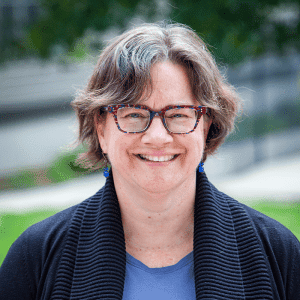Five years ago, I sat in a packed auditorium of soon-to-be Graduate School of Education master’s students at Lesley University who were all looking for jobs in the Boston area. The mood in the room was palpable: inquisitive fear with a dash of hubris. I looked around the room, remembering the excitement and anxiety-fueled process of trying to land my first teaching job.
A panel of principals and human resource representatives from public, charter, and independent schools was on the stage. They looked powerful and intimidating as they adjusted their papers and ensured their microphones were working properly. I was there to get a read on the current hiring climate in order to help our associate teachers at Belmont Day land their own teaching jobs for the fall.
I will never forget when a representative from a local school district shared what he and his hiring team thought was the essential ingredient of what makes an effective educator. He told those graduate studentswho had just learned how to craft detailed lesson plans, create clear objectives, and design hands-on projectsthat if they could not explain how they would ensure that every student in their classroom would feel that they belong and had a voice and a “place at the table of learning,” then they will not get hired. Every single panelist nodded their head vigorously.
Increasingly prevalent in public and independent school hiring decisions is how readily and actively an educator can center the identity of each and every child in their classroom and how effectively they can foster empathy and acceptance of others who are both similar and different. Faculty at Belmont Day do this work in so many ways. They choose resources that prompt discovery and inquiry about self and others, and they engage students in conversations about what it means to be equitable, inclusive, and just. Meanwhile, teachers are doing this themselves and with their colleagues. This kind of teaching and learning is essential if we claim to honor our school’s mission and core values at Belmont Day.
This school year, the associate teachers and I have reflected on ways to incorporate the Social Justice Standards into our own practice. These standards help frame our thinking as we design the key understandings and essential questions we hope students will grow from and reflect on. Formerly known as Teaching for Tolerance, and now called Learning for Justice, the organization that designed the Social Justice Standards partners with educators across the country to provide resources for teachers who teach in grades K-12.
It isn’t lost on most that the name change two years ago from Teaching for Tolerance to Learning for Justice was timely and necessary. Striving toward tolerance alone is unacceptable. I would never want to claim that my school community or curriculum implied that people should be simply tolerated. It’s time to move beyond tolerance and embrace acceptance. For when we can accept each other and allow everyone to be fully who they truly are when they enter our school building, then we are better for it and far more ready to learn together and from each other.

